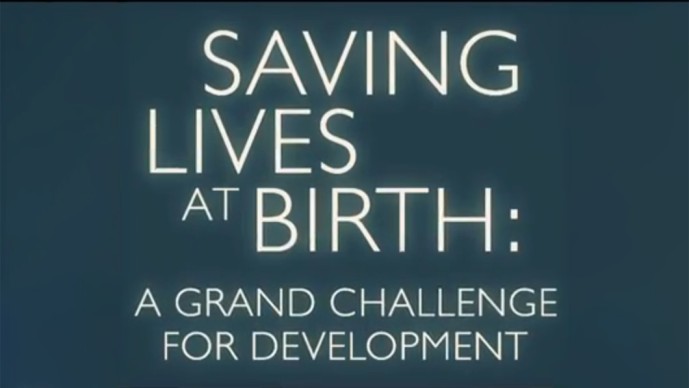65 Ideas to Save the Lives of Women and Babies
- Gary Darmstadt, Wendy Prosser, Andrew Serazin, Jul 12, 2012

The excitement is building today in Seattle at the Saving Lives at Birth DevelopmentXChange. Think of it as a cross between a science fair, an angel investor conference, and meeting of global health experts.
This funding initiative comes out of the dire need to reduce the health risks during pregnancy and birth in order to improve the chance of survival for both mom and baby. Today around the world there are more than 150,000 maternal deaths, 1.6 million neonatal deaths and 1.2 million stillbirths each year. that occur right around the time of delivery, and most of these are preventable.
From over 500 submissions of innovative ideas to save the lives of mothers and babies, fifty percent of which were from low and middle income countries, we have whittled it down to the 65 most promising projects. Over the next three days, at the DevelopmentXChange, finalists will pitch their ideas and plans, receive advice from seasoned entrepreneurs and compete for funds.
The Saving Lives at Birth initiative is a unique approach to funding because it is a true partnership among five donors to save the lives of women and babies in the poorest countries in the world. It is not housed in a specific place or building, rather it is simply an alliance of like-minded institutions working together towards this common goal.
The partners of this initiative – USAID, the Government of Norway, Bill & Melinda Gates Foundation, Grand Challenges Canada, and the UK Department for International Development (DFID) share a common realization that improving the health and lives of women and newborns is a key component for achieving those individual mandates.
Another key feature of the partnership is that it unites funding agencies, international experts, and communities in the quest for solutions. Too often these three groups are out of sync with each other. We believe venues such as the DevelopmentXChange provide a safe space for communication of ideas, beliefs, and perspectives that can drastically shorten the time needed to develop life-saving innovations.
As Henry Ford said:
Coming together is a beginning, staying together is progress, and working together is success.
The beginning of this partnership was inspired by the foundation’s Grand Challenges in Global Health program that seeks to bring the world’s best minds to global health issues. Saving Lives at Birth started in 2011 and provides two types of funding to its winners: a seed grant of $250,000 to stimulate proof of concept of new ideas; or a transition grant of $2 million to allow for grantees to actually demonstrate impact of innovations at scale, including measurement of lives saved. In Round 1, concluded in July 2011, 21 seed grants and three transition grants were awarded to innovators from a broad range of disciplines and expertise, marrying the imagination and ingenuity from multiple sectors.
Another reason to highlight Henry Ford is the nature of his success. Although often mistakenly credited with inventing the motor car, his real innovation was in achieving scale. It was his perfection of the assembly line – imported to automobile manufacturing from the food processing industry – that allowed him to bring the car to the world. He scaled up production by being creative, innovative and cutting-edge.
We are asking the same from the winners of Saving Lives at Birth.
Tomorrow, in a new blog post, we’ll highlight some of the winners from last year. Think of it as a teaser for Saturday’s announcements of this year’s winners and possibly future technologies that can make it easier and safer for a baby to come into the world and her mother to survive.